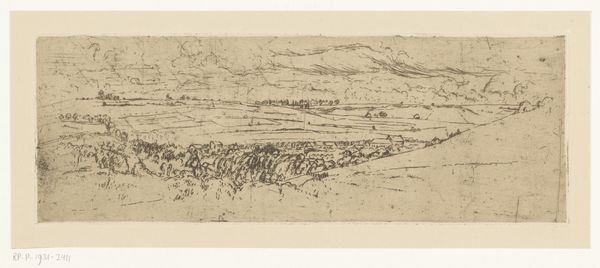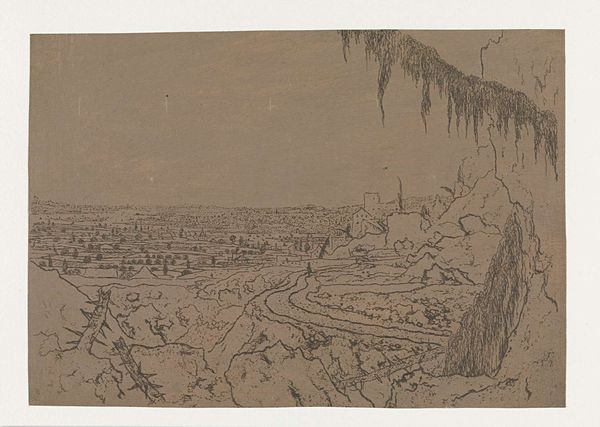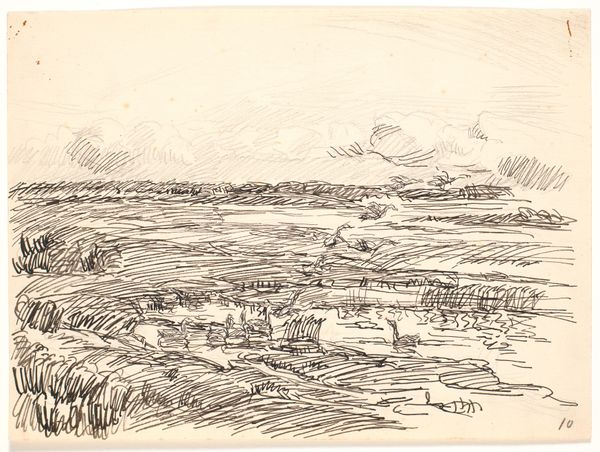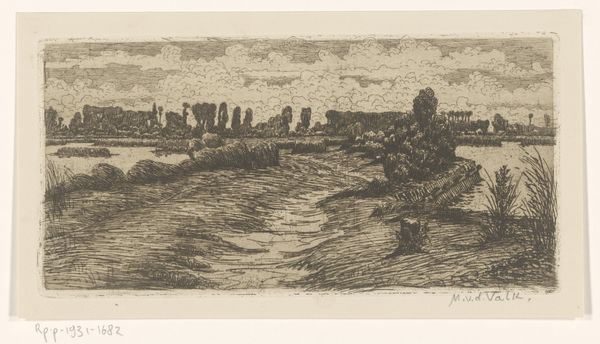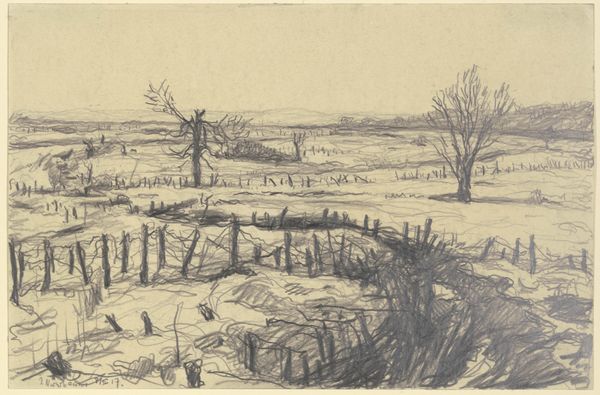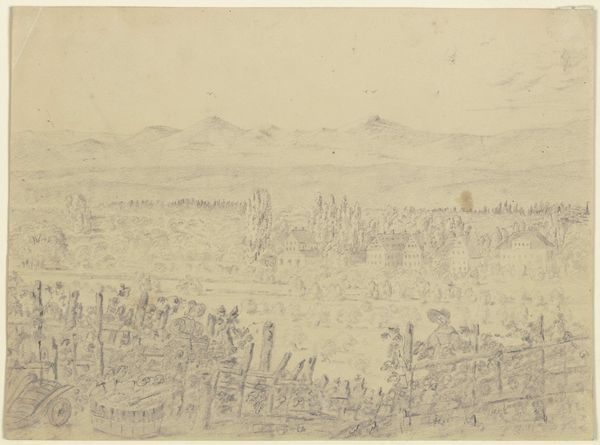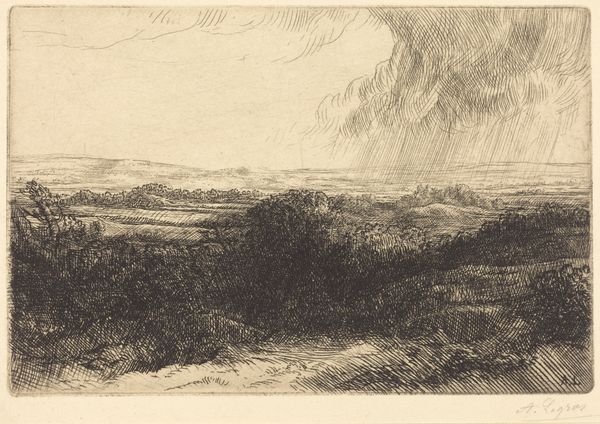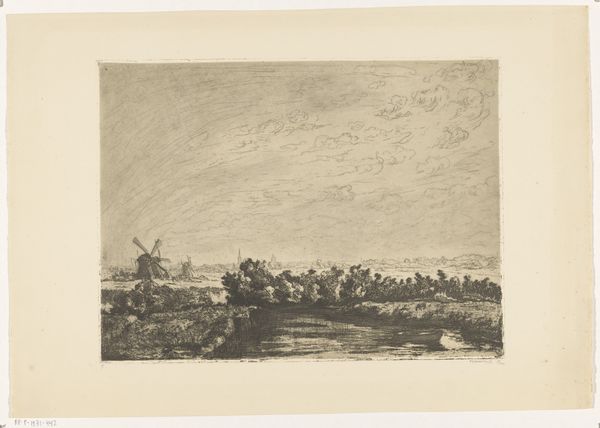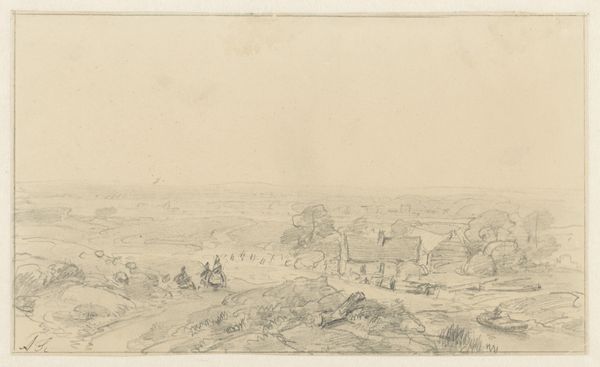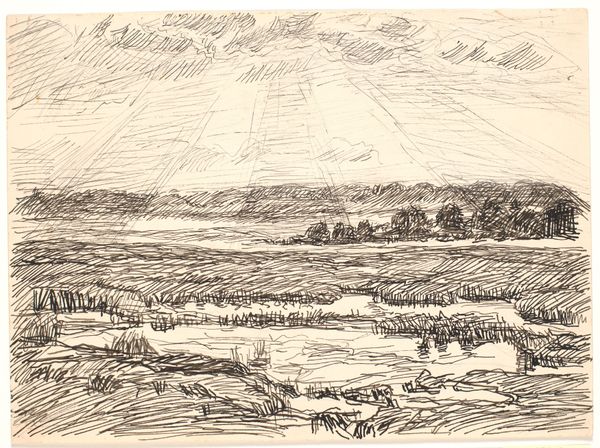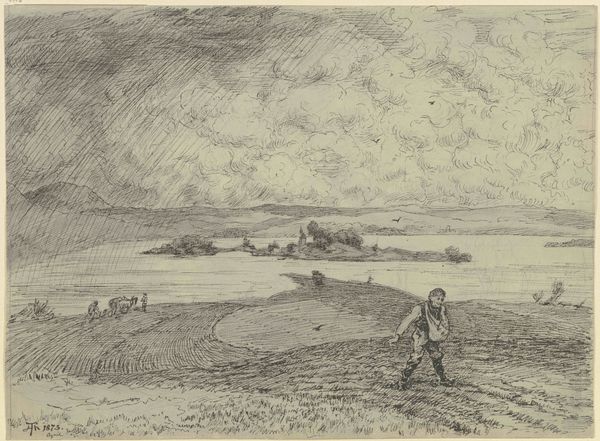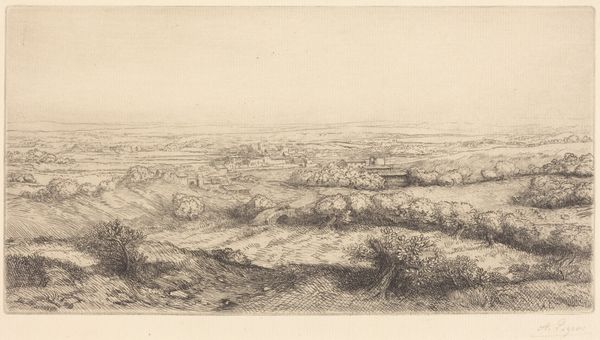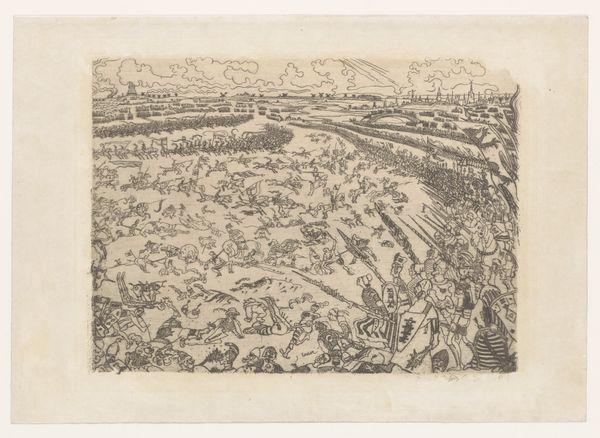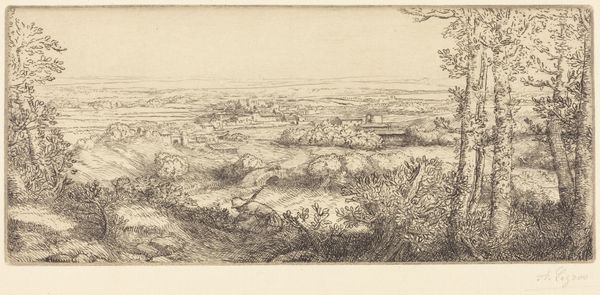
drawing, print, pencil, pastel
#
drawing
# print
#
landscape
#
etching
#
pencil
#
pastel
#
realism
Dimensions: height 600 mm, width 800 mm, height 480 mm, width 635 mm
Copyright: Rijks Museum: Open Domain
Curator: The drawing you are viewing is titled "Eembrugge," created in 1927 by Leo Gestel, and employs etching, pencil, and pastel on paper. It's currently held here at the Rijksmuseum. Editor: What immediately strikes me is the scene's subdued palette; it creates an atmosphere of muted labor under an overcast sky. There’s an elemental feel to it, wouldn't you agree? Curator: Absolutely, and consider the setting: Eembrugge. Gestel captures the essence of rural labor. Haystacks dot the landscape. The drawing conveys a directness. It’s as though Gestel wants to showcase a slice of the everyday, unvarnished. Editor: Those haystacks are fascinating – they could almost be a universal symbol of harvest, hard work, and nature's abundance. Yet, the muted colors evoke something other than prosperity; a cycle that keeps moving. It calls to mind that the Earth asks a lot. Curator: Indeed, those tones definitely deepen the piece, bringing in some melancholia. The etching lends the scene this granular, almost ethereal quality that plays against what would otherwise be a standard landscape scene. There's an understated elegance in Gestel's approach. He refrains from romanticizing; instead, he focuses on authenticity. Editor: You know, the way the figures blend in—their faces are hard to make out. It reinforces the idea that this is less about individual heroics and more about a communal undertaking. The repetitive tasks and landscape… all these elements tie into larger cycles and human engagement. Curator: It's the symbiosis, precisely, Gestel illustrates with clarity: humanity intertwined within the wider processes of nature. I keep getting drawn back to the skyline – notice how softly he implies civilization in the distance without ever interrupting the focus from its foreground activities. Editor: Now that you mention it, there's also something beautiful in recognizing familiar human roles from older farming methods, with all its embedded symbology. "Eembrugge" resonates because Gestel uses commonplace forms, a field, haystacks, laborers, as a kind of window to wider understandings. Curator: In retrospect, "Eembrugge" achieves much with very little through its blend of materials and balanced approach. Gestel transforms his chosen vista into both representation and profound, lasting insight. Editor: Ultimately, that synthesis Gestel conjures ensures that "Eembrugge" remains suspended outside purely stylistic readings. We remember it precisely because its familiar setting reminds us what connects disparate moments across generations.
Comments
No comments
Be the first to comment and join the conversation on the ultimate creative platform.
